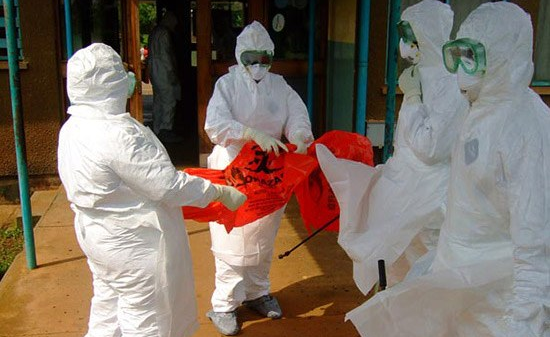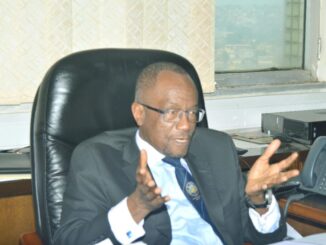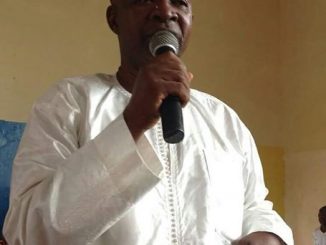
The commencement of the rolling of socio-economic recovery packages in post-ebola Sierra Leone provides a wonderful opportunity to retrace our pre-ebola impressive economic strides. This focuses on building a viable economy that will regain lost grounds and repositioning us to robustly pursue a socio-economic path that is bound to usher us into a middle income nation by 2035- a donor nation. This was the direction we were heading to before the outbreak. (Sierra Leone hits its highest economic status since she was born – we were among the fastest growing economies in the world early 2014. It was pretty impressive! If our nation had missed her appointment with the dreaded ebola, I wonder the height we would have climbed by now).
Given the degree of wreckage unleashed by the scourge and the urgency to regain and accelerate socio-economic pace, recovery packages should aim at nothing less than being very successful. As a nation, we have certainly been buffeted by the horrible clutches of ebola, yet the tenacity of our national resilience has graciously emboldened our resolve more than ever before to move on – we have sensed that economic liberation is achievable in our country; we are willing and determined to rekindle the pursuit of our admired national recovery path because we are firmly entrenched in the isle of hope sandwiched in our inherent belief that we can achieve whatever we set our hearts to do.
From daily statistics, we have scored tremendous gains in the fight against the disease. The general atmosphere is becoming conducive for the revamping of socio-economic activities. Now, within the framework of development analysis, a well-thought out and comprehensive recovery package should immediately precede the triumph of the disease. This was aptly captured in President Koroma’s short-term (6 to 9 months) post ebola recovery package prioritizing four areas – health, education, private sector and social protection. He has wasted no time to kick-start it – commencing July 2015 till March 2016. Great!
The factors that will determine the success of the package are varied. Robust implementation and effective monitoring within the atmosphere of transparency and accountability is the absolute path. Funds should only be expended on result-producing interventions. Of fundamentally important is the apt designing of programs and the effective monitoring of implementation of project emanating from such programs. Given that, from government source 80% of recovery plans have been completed, I am pretty sure relevant programs have been carefully identified and appropriately developed. Or else, such cherished socio-economic anticipation is bound to become a mere dream and worst still, clouding a full socio-economic onslaught .Continuous reviewing of programs is crucial in reflecting community needs as well as maximizing participation.
The effective monitoring of the implementation of projects by the media is pivotal. In this light, a quality communication strategy should be crafted or reviewed if there is one. The media should have unhindered access to information for mass consumption. Experience has taught us that when updates of project implementation are in the public domain the proclivity for corruption is all-time low. Mass media coverage of the implementation of projects do not only increase the knowledge-base of beneficiaries and avoid duplication of interventions as well as wastage of resources but it also provides substantial public perception and other information which influence donors approval ratings. Such approval ratings can’t just be toyed with. Apart from its rough edges, the media has been vocal in our national crusade of transparency and accountability. I have no doubt that with the availability of information, media houses are set to publish.
I salute the wisdom of having a coordinator in each of the four intervention areas. This will among other things enhance effective coordination of each priority area as well as synergizing were they overlap. Of significantly importance is that these four coordinators should be accessible to the media. I suggest that each coordinator should at least meet the press twice a month. They should be fully prepared to give comprehensive updates of their respective operations. Ordinary citizens need to know what is going on – What is working. What is not? Which areas are creating more impact? Which are not? Which needs complementation, reviewing or overhauling?, Who are the beneficiaries? What are the packages? Are packaged wholly reaching targeted beneficiaries? etc.
On her path, Government should tie donors to these four priority areas by heralding it loudly in their ears. It is true that sometimes donors can have established priority intervention areas which might not rhyme with governments. Here, they can be engaged to link interventions to priority areas.
Caution and dignity should be maintained in dealing with survivors and other beneficiaries. True beneficiaries should not be deprived the least by the machinations of corrupt officials.
We are a great nation! In the last twenty –five years, we have demonstrated indefatigable tenacity in defining our collective future. We have a great opportunity to reposition our nation on the path of development once more. Let us endeavor to make the most out of it.



